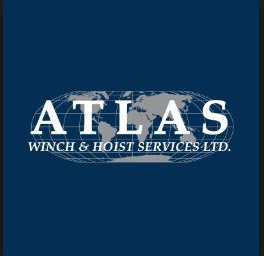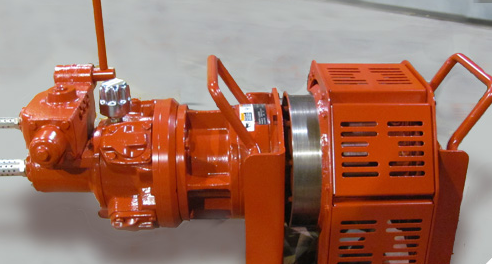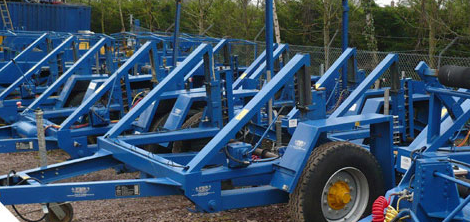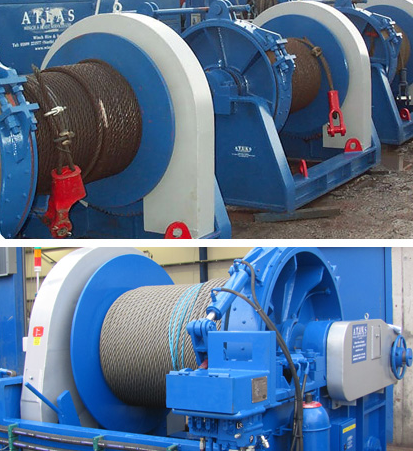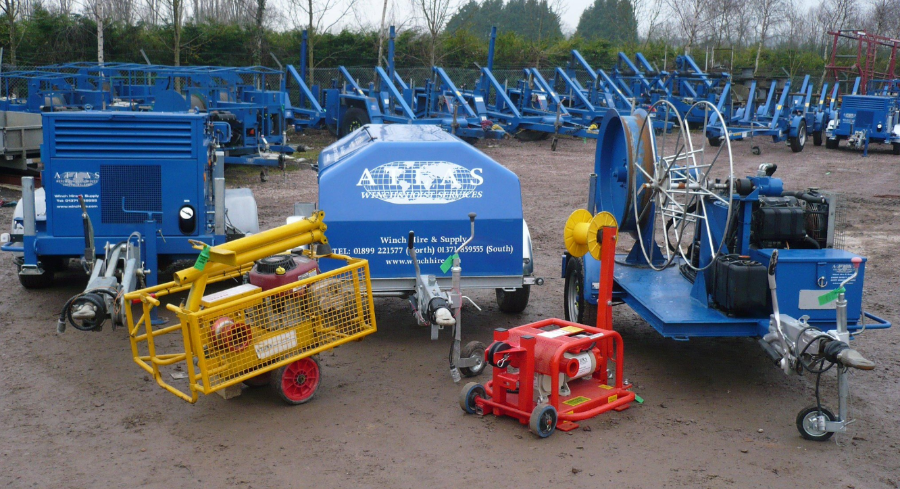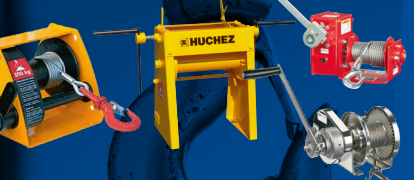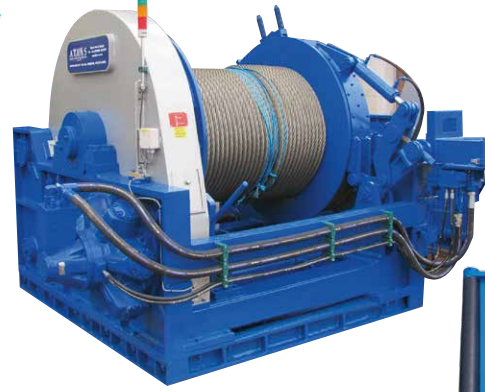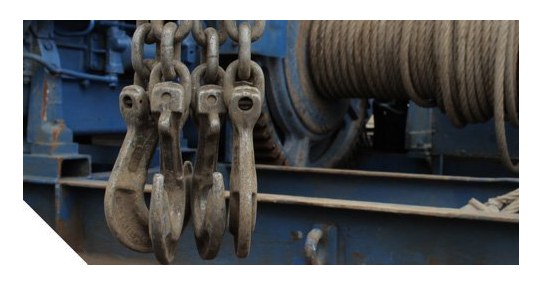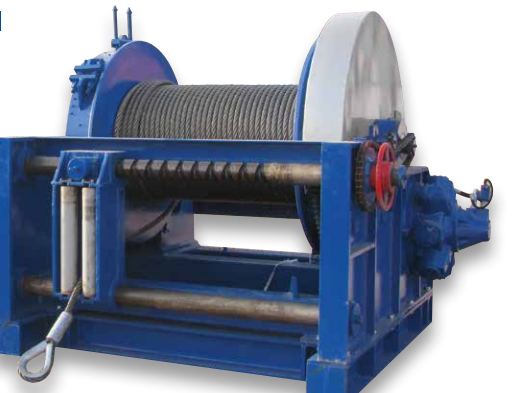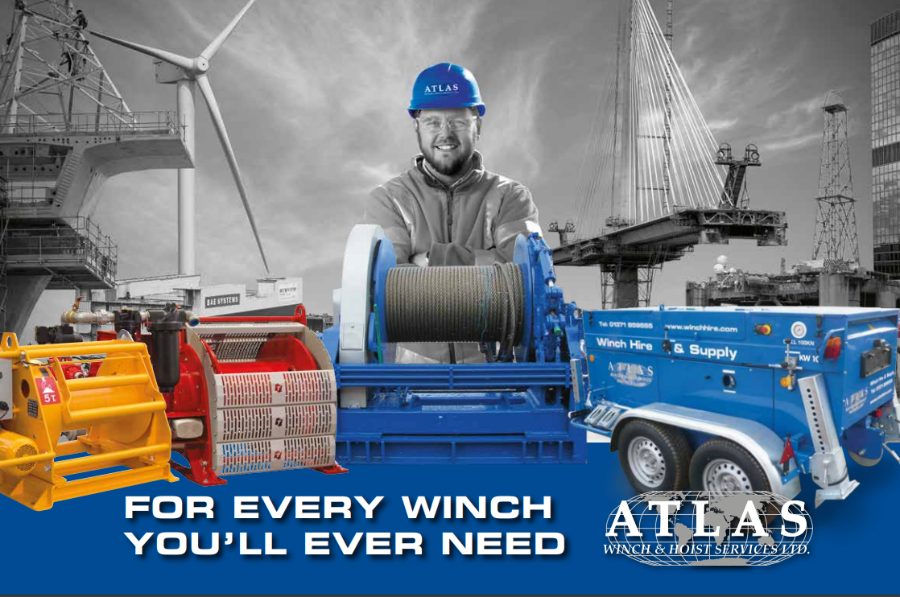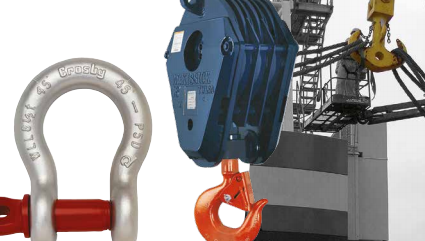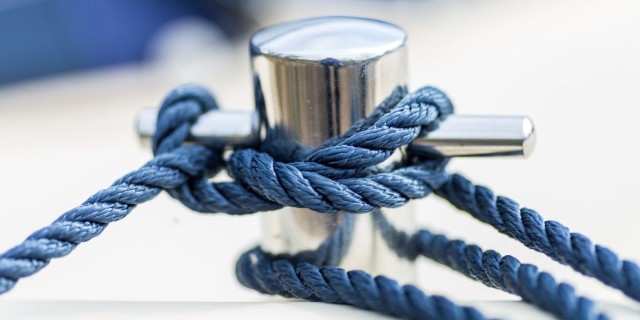ANCHORS THROUGH TIME: A HISTORY OF MOORING EQUIPMENT
13 March 2023
Mooring equipment is a definitive essential within a number of industries, allowing individuals to safely and securely position a vessel in place, either temporarily or for an extended period of time. Due to the variation in seabed conditions, vessel sizes, availability of space and many other factors, this certainly isn’t a ‘one-size-fits-all’ situation. For these reasons, there are plenty of different mooring options to acquire from the trusted experts at Atlas Winch Hire & Hoist Services. Read ahead for a brief history of anchors, and their continued application in the current maritime industry, with modern developments, surprising origins and a breakdown of different variants for good measure.
TYPES OF EQUIPMENT
It’s hard to express the importance of mooring equipment within the maritime industry,with this comprehensive set of fittings and mechanisms used to secure the large ship or boat when it is moored at a dock. Not only is mooring equipment required in this instance, but also when vessels are secured at the wall of a lock, to buoys, or alongside another boat. At Atlas Winch Hire, our mooring systems can range from simple rope and wire mooring systems for a small personal boat, all the way to highly-technical 8 point winch systems – using heavy anchors.
Having acquired an impressive range of situational mooring equipment, we’re committed to finding solutions for all our clients. The ideal mooring solution will not only streamline processes, but can also be crucial for the safety of your vessel, other vessels, and anything you’re securing your ship to. Consider all manner of 4, 6 and 8 point mooring systems for crane and excavator barges, offshore supply and survey vessels. Mooring buoys, pennant wire ropes, schmitt brackets and panama chocks are just as desirable.
WHAT IS AN ANCHOR?
Perhaps the most widely recognised form of mooring equipment, the humble anchor usually represents a heavy object attached to a corresponding vessel by a cable, rope, or chain, which is dropped to the seabed. Usually made of a bulky metal, anchors can either be temporary or permanent. Permanent anchors are rarely moved, whereas vessels may carry one or more weighted temporary anchors. All modern anchors are designed with a separate top and bottom section, and generally the bottom half is heavier than the top, which means that it almost always turns correctly when it lands on the seabed.
EXPLORING ANCHOR TYPES
The amount of variation found within anchors both in the modern day and historically can be attributed to the range of vessel types they are used in correspondence with, and diverse seabed conditions which can be encountered. Read on for details on the three primary anchor types:
FLUKE ANCHORS
Fluke anchors are particularly popular on small vessels, as they’re lightweight, can be folded and stored very easily within limited room, and they also hold well in mud or sand. Despite these perks, the fluke anchor doesn’t hold as well on grassy or rocky surfaces, limiting usability.
PLOW ANCHORS
Plow anchors have fixed shanks and look like a plow, resetting themselves if the wind or current changes direction. Holding effectively in grass, mud, and even sand, the higher weight of these mooring utilities can take up storage room.
CLAW ANCHORS
Simple in design, the claw anchor should hold well in any seabed, but is harder to handle, adapted from the large and heavy anchors used to secure oil rigs in the North Sea, much like the plow anchor, it does not fold away and takes up a lot of storage room.
THE EARLY DESIGNS
Before the invention of the anchor as a distinctive piece of equipment, sacks of sand were often used as a substitute, though in the Bronze Age, seafarers were able to construct the first anchor as we recognise it today. It was made of a rope and a rock big enough to keep the ship still, while in other parts of the world, wooden logs filled with lead were also designed to secure vessels in the sea. The Chinese might have created the first device that visibly resembles a classic anchor back in 2,000 B.C, though the first records of an anchor with two hooked arms were found on Greek coins – dating back as early as 750 B.C.
ALTERATIONS THROUGH THE YEARS
In the 16th century, seafarers began using vertical-axed rotating machines, which could assist the crew in various anchoring operations. These machines simplified the process of releasing, holding, and manipulating the anchor functionality, setting the precedent for many modern inventions. Until the beginning of the 19th century, the majority of anchors were still being secured with a hemp rope. though finally, in 1809, one of the ships of the British Royal Navy was equipped with the first modern anchor chain.
MODERN INNOVATION
Since the latter part of the 20th century, modern innovations have come to prominence, with the spade anchor of the 1990s providing a huge improvement in performance. Successfully making use of a concave fluke, the spade is frequently used to this day. Additions including roll-bars to ensure correct setting are certainly of benefit, while lightweight foldable designs allow for easy storage and transportation. Though new anchor types are being developed to this very day, there are surprisingly few adjustments required when referring back to the classic anchors used throughout the prior decades. The majority of new designs have far too many negative features to be adopted at scale – so if it isn’t broken, don’t fix it.
OUR SPECIFIC SERVICES
We provide servicing, repairs, spares and accessories for all makes and models of winches, hoists, lifting gear and associated rigging – while our bespoke offerings are increasingly popular. With that being said, here are just a selection of our most popular applications:
EXPERT CONSULTATIONS
Fully qualified Engineers and trained onshore and offshore winch operators are available for consultation, operating Atlas or clients owned equipment as-per your requests. Alongside expert-backed advice, we can provide portable units and large specialist spoolers up to 300 tonnes in payload and 30 tonnes back tension.
WINCH OPERATION TRAINING
In-house and onsite accredited training can be provided for standard cable pulling winch operation. Non- standard winch operator training can also be made available, tailor-made to suit clients specific needs – with full certification and documentation provided, while our expansive range of winches can be acquired on a cost-effective temporary basis.
SITE AND WINCH REFURBISHMENT
We stay on top of the latest technological developments, allowing the team to service, refurbish, adapt and modify any winch. All work is fully warranted too, giving you the security and peace of mind you deserve. Worldwide service is even available, providing you with a fantastic refurbishment option wherever you’re based.
ATLAS WINCH HIRE: PREMIUM MOORING EQUIPMENT FOR VARIED NEEDS
When it comes to lifting equipment, we’re the experts you need! As a family-owned business, we prioritise delivering excellent customer service so your experience is stress-free and reliable. Brothers Denis Lavery and Anton Lavery have worked within the winch machine and lifting equipment industry for decades, using this wealth of experience to offer the essential powered winch equipment that our customers need.
As winch specialists, we aim to meet all of your lifting needs. We’re a company that stocks all of the essential equipment that you need, including lifting slings, base-mounted winches, and even load monitoring equipment. Contact our winch specialists at info@winchhire.com to discuss your hiring and buying options, both new and used, all of which will be tailored to your budget.

